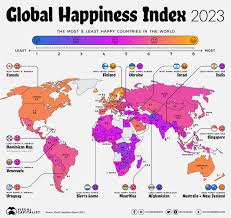After conducting a workshop and delivering a lecture at a Government agency affiliated with the Ministry of Education in Bandar Enstek recently, I am taking the initiative to share insights on the data-driven decision-making process.
I have been engaged in coaching, training, and workshops on this subject for both private and Government agencies, specifically targeting department heads and division heads. By sharing this information, I hope that readers will gain new perspectives and apply them to their respective units, departments, or organizations.
I like this topic because it will help the people involved to be more specific and more prudent in taking any decision-making and they will conduct their decision-making process based on facts and info and data, rather than too much depending on the guts feel.
Allow me to begin by introducing the general concept of Data-Driven Decision Making (DDDM), providing you with a basic understanding before delving deeper into the topic. This will help prepare your mindset for the subsequent discussion.
In today’s digital age, data has become an invaluable asset for businesses across industries. The ability to collect, analyze, and derive insights from data has opened up new opportunities and revolutionized decision-making processes. Data-driven decision-making has emerged as a strategic approach that empowers organizations to make informed choices based on evidence rather than intuition alone. By harnessing the power of data, businesses can gain a competitive edge, optimize operations, and drive growth.
The rise of Data-Driven Decision Making: Data-driven decision-making represents a departure from traditional decision-making methods, which heavily relied on gut feelings, personal experiences, and anecdotal evidence. As technology advanced, businesses realized the immense potential of data to guide decision-making processes. With the advent of big data, analytics tools, and machine learning algorithms, organizations can now access vast amounts of structured and unstructured data to extract meaningful insights.
The pillars of Data-Driven Decision Making
- Data Collection: The foundation of data-driven decision-making lies in the collection of relevant and reliable data. Organizations need to establish robust data collection systems, tapping into various sources such as customer interactions, market research, operational metrics, and external databases. The data should be accurate, up-to-date, and aligned with the specific objectives of the decision-making process.
- Data Analysis: Once the data is collected, it needs to be transformed into actionable insights through rigorous analysis. This involves using statistical techniques, data visualization tools, and predictive modeling to uncover patterns, correlations, and trends. Advanced analytics methods, such as machine learning and artificial intelligence, enable organizations to extract deeper insights from complex datasets.
- Insights and Decision Making: Data analysis leads to valuable insights that form the basis for decision-making. These insights help organizations evaluate different options, assess risks, and predict outcomes. Decision-makers can now rely on objective evidence to support their choices, reducing the reliance on biases and increasing the likelihood of success.
- Implementation and Evaluation: Data-driven decision-making does not end with the selection of an option. It involves implementing the decision and continuously monitoring its impact. Key performance indicators (KPIs) and metrics are established to evaluate the effectiveness of the decision. By measuring outcomes, organizations can refine their strategies, learn from mistakes, and improve future decision-making processes.
Benefits of Data-Driven Decision Making
- Enhanced Accuracy and Objectivity: Data-driven decisions minimize the influence of personal biases and subjective judgments. By relying on empirical evidence, organizations can make more accurate and objective choices, leading to improved outcomes.
- Agility and Adaptability: Data-driven decision-making enables organizations to respond quickly to changing market dynamics. Real-time data analysis allows for agile decision-making, capitalizing on emerging opportunities and mitigating risks promptly.
- Customer-Centric Approaches: Understanding customer behavior and preferences is key to success. Data-driven decision-making provides insights into customer needs, enabling organizations to deliver personalized experiences, targeted marketing campaigns, and tailored products or services.
- Optimal Resource Allocation: By analyzing data, organizations can optimize resource allocation and operational efficiency. Insights derived from data help identify areas where resources can be better utilized, leading to cost savings and improved productivity.
- Risk Mitigation: Data-driven decision-making facilitates proactive risk management. Organizations can identify potential risks and anticipate challenges through data analysis, allowing them to take preventive measures and minimize the impact of adverse events.
- Continuous Improvement and Innovation: Data-driven decision-making fosters a culture of continuous improvement. By monitoring outcomes and analyzing data, organizations can identify areas for optimization, drive innovation, and stay ahead of the competition.
It is quite common, especially during my workshops, for participants to express their misconception about Data-Driven Decision Making (DDDM) by stating that they are not part of the ICT department or the data center team.
However, it is important to dispel this notion and clarify that DDDM is not solely restricted to those specific teams or roles. The techniques and concepts associated with DDDM can be applied by individuals across various departments and positions within an organization. It is not limited to a specific group of people; rather, it is a mindset and approach that can benefit decision-making processes throughout the entire organization.
It’s a common misconception that only individuals from the ICT department or the data center team can effectively implement the techniques and concepts of Data-Driven Decision Making. However, it’s crucial to understand that DDDM is not exclusive to a particular department or team. In fact, it is a collaborative approach that can be applied by individuals across various roles and functions within an organization.
Data-Driven Decision Making involves using data and analysis to inform and support decision-making processes. It emphasizes the importance of gathering relevant data, analyzing it objectively, and drawing insights from the findings to make informed decisions. This approach can be applied by anyone who has access to data and is involved in decision-making, regardless of their specific department or role.
By embracing DDDM, individuals from different areas of an organization can contribute their unique perspectives and insights, leading to more comprehensive and well-informed decisions. It’s essential to overcome the misconception that only certain teams or individuals can utilize data-driven techniques, as the benefits of this approach are applicable to a wide range of roles and responsibilities.
I would like to recommend some steps that each organization can take to start implementing the concept of data-driven decision-making:
- Define Clear Objectives: Start by clearly defining the objectives you want to achieve through data-driven decision-making. Identify the specific areas or processes where data can bring the most value and align them with your overall business goals.
- Assess Data Readiness: Evaluate your organization’s current data capabilities and infrastructure. Determine if you have the necessary systems, tools, and resources to collect, store, and analyze data effectively. Identify any gaps or areas that require improvement.
- Establish Data Governance: Develop a robust data governance framework to ensure data quality, security, and privacy. Define clear policies and procedures for data collection, storage, access, and usage. Assign responsibilities and accountabilities for data management within the organization.
- Identify Key Metrics and KPIs: Determine the key metrics and performance indicators that align with your objectives. Identify the data points and measurements needed to track progress and evaluate the success of your initiatives. Ensure these metrics are aligned with your organizational goals and are measurable and actionable.
- Collect Relevant Data: Identify the data sources that are relevant to your objectives. This may include internal data from various systems, customer data, market research data, or external data from third-party sources. Implement mechanisms to collect, consolidate, and integrate data from these sources.
- Data Analysis and Insights: Invest in data analysis capabilities, such as data analytics tools and technologies. Build a team of data analysts or data scientists who can extract insights from the data and provide actionable recommendations. Use techniques like data visualization, statistical analysis, and predictive modeling to uncover patterns, correlations, and trends.
- Data Literacy and Training: Ensure that employees have the necessary data literacy skills to understand and interpret data effectively. Provide training and resources to enhance their data literacy and analytical capabilities. Encourage a data-driven culture and foster a mindset of curiosity and continuous learning.
- Implement Data-Driven Processes: Integrate data-driven decision-making into existing processes and workflows. Encourage decision-makers to base their choices on data-backed insights rather than relying solely on intuition or experience. Establish feedback loops and mechanisms to capture insights and learnings from data-driven decisions.
- Monitor and Evaluate: Continuously monitor and evaluate the outcomes and impact of data-driven decisions. Track key metrics and KPIs to assess the effectiveness of your initiatives. Use this feedback to refine your data strategies, make necessary adjustments, and iterate on your decision-making processes.
- Foster Collaboration and Communication: Encourage collaboration and cross-functional communication around data-driven decision-making. Break down silos and promote knowledge sharing across teams and departments. Ensure that data insights are communicated effectively to relevant stakeholders and decision-makers.
- Iterate and Improve: Data-driven decision-making is an iterative process. Regularly review and refine your data strategies, measurement frameworks, and analytical approaches. Learn from successes and failures, and continuously seek ways to improve your data capabilities and decision-making processes.
If you follow these steps, organizations can start their journey toward implementing data-driven decision-making. It’s essential to remember that data-driven decision-making is an ongoing process that requires commitment, investment, and a culture that values and embraces data as a strategic asset.
Difference between Data-driven Decision-Making Versus Gut-feel Decision Making Process
When it comes to decision-making, there are significant differences between using the concept of data-driven decision-making and relying on gut feeling. Here are some key distinctions:
- Basis of Decision Making
- Data-driven decision-making: Decisions are based on factual evidence, quantitative analysis, and insights derived from data. It involves collecting and analyzing relevant data to inform the decision-making process.
- Gut feel decision making: Decisions are based on personal intuition, past experiences, and subjective judgment. It relies on instinct and a “gut feeling” about what might be the right course of action.
- Objectivity
- Data-driven decision-making: It aims to minimize biases and personal opinions by relying on objective data and analysis. Decisions are based on verifiable facts, reducing the influence of individual perspectives.
- Gut feel decision making: Decisions can be influenced by personal biases, emotions, and individual perspectives. It may be subject to cognitive biases, leading to potential errors or misjudgments.
- Accuracy and Reliability
- Data-driven decision-making: It focuses on accuracy and reliability by using data that is collected, processed, and analyzed systematically. The decision-making process is based on statistical analysis and evidence-based insights.
- Gut feel decision making: Decisions can be subjective and prone to inaccuracies because they are based on personal beliefs, opinions, and limited information. It may not consider the full range of relevant data and can be influenced by personal biases or external factors.
- Risk Mitigation
- Data-driven decision-making: It allows for better risk assessment and mitigation by leveraging data analysis to identify patterns, trends, and potential risks. It provides a systematic approach to understanding potential outcomes and their associated risks.
- Gut feel decision making: Risk assessment is often based on intuitive judgment and personal experiences, which may not consider all relevant factors. It can lead to a higher degree of uncertainty and potential exposure to unforeseen risks.
- Consistency and Replicability
- Data-driven decision-making: It provides a structured and replicable decision-making process. By relying on data and analysis, decisions can be consistently applied across different scenarios and contexts.
- Gut feel decision making: Decisions based on gut feel can vary from person to person and may not be easily replicable. Different individuals may have different instincts or intuitions, leading to inconsistencies in decision-making outcomes.
- Transparency and Accountability:
- Data-driven decision-making: The decision-making process is transparent as it is based on data and analysis, which can be shared and reviewed by stakeholders. It allows for greater accountability and traceability of decisions made.
- Gut feel decision making: Decision-making processes based on gut feel may lack transparency as they are subjective and not easily explained or justified to others. It may be challenging to hold individuals accountable for decisions made based on personal instincts.
While gut feeling can play a role in decision-making, data-driven decision-making offers a more systematic, evidence-based approach that aims to reduce biases, increase objectivity, and enhance the accuracy and reliability of decisions. It allows organizations to leverage the power of data and analysis to make informed choices with a higher likelihood of positive outcomes.
Conclusion
To conclude, let me emphasize that the era of relying solely on gut feel and intuition for decision-making is fading away. Data-driven decision-making has emerged as the way to navigate the complexities of today’s data-rich world. Whether you’re a small business owner, a non-profit organization, a startup entrepreneur, or even an individual solopreneur, embracing this concept is no longer a luxury but a necessity.
By leveraging the power of data, organizations can unlock valuable insights, minimize risks, and drive innovation. It enables them to make informed choices that are aligned with customer needs, optimize operational efficiency, and stay ahead of the competition. Moreover, data-driven decision-making isn’t limited to the business realm; it can be applied to personal life as well, enabling individuals to make better choices, achieve their goals, and enhance their overall well-being.
In this fast-paced and data-driven world, adapting to the concept of data-driven decision-making is no longer a mere option; it’s a strategic imperative.
Embrace the power of data, invest in the necessary tools and resources, and foster a culture that values data and insights. By doing so, you position yourself, your organization, and your daily life for success, growth, and a competitive edge in today’s dynamic landscape. The time is now to harness the power of data-driven decision-making and embark on a journey of informed choices and remarkable outcomes.







